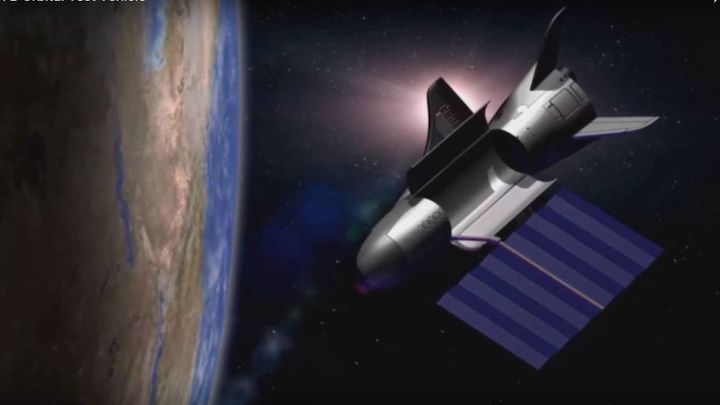9.04.2021
And some preliminary results are already in.

A U.S. military space plane is being used to flight-validate the best ways to gather the sun's energy for power beaming from Earth orbit.
In mid-March, the latest classified mission of the U.S. Space Force's X-37B robotic space plane winged past 300 days in Earth orbit.
Most of the robotic space drone's duties on this mission, known as Orbital Test Vehicle-6 (OTV-6), are a tightly held secret. However, one known bit of research that the craft carries is the Photovoltaic Radio-frequency Antenna Module Flight Experiment, or PRAM-FX.
PRAM-FX is a Naval Research Laboratory (NRL) experiment that's investigating transforming solar power into radio frequency (RF) microwave energy. PRAM-FX is a 12-inch (30.5 centimeters) square tile that collects solar energy and converts it to RF power.
Paul Jaffe, the innovation power beaming and space solar portfolio lead at NRL, said that PRAM-FX is not beaming microwave energy anywhere. Rather, the experiment is gauging the performance of sunlight-to-microwave conversion. To be measured is how the PRAM is performing from an efficiency standpoint and also from a thermal performance stance, he said.
Preliminary results
That in-space task is relatively simple. But PRAM-FX helps advance a more ambitious objective — soaking up the sun's energy and broadcasting that power to an energy-hungry Earth.
The first preliminary results from PRAM-FX aboard OTV-6 were published in January as part of a review paper co-authored by Jaffe in the Institute of Electrical and Electronics Engineers (IEEE) Journal of Microwaves.
"Though these results are preliminary, they compare favorably with the performance documented in ground testing, which also demonstrated 8% total module efficiency. As the experiment proceeds, a full picture of the module's performance under different illumination and temperature conditions in the space environment will be uncovered," the IEEE paper points out.
Step-by-step phases
The Air Force Research Laboratory (AFRL) has blueprinted a major demonstration project that aims to beam power collected in space to expeditionary forces on Earth. That project is called the Space Solar Power Incremental Demonstrations and Research (SSPIDR).
As outlined in the IEEE paper, SSPIDR's demonstrations include experiments called Arachne, SPINDLE, and SPIRRAL.
"Arachne will be the world’s first space-to-ground power beaming demonstration of a solar-to-RF modular panel with in-situ surface-shape measurement to optimize beam formation. The solar-to-RF panel technology is designed to scale to very large apertures and to support high volume, low-cost manufacturing," the paper reads.
Arache is scheduled to fly in 2024. AFRL received the first flight hardware component of the Arachne spacecraft from Northrop Grumman last December.
SPINDLE will test on-orbit deployment of a sub-scale version of the operational system. And SPIRRAL "will test thermal management approaches to ensure a long-lasting, high-performance system," the paper reads.
If all goes according to plan, SPIRRAL will launch in 2023 as part of the Materials International Space Station Experiment (MISS-E) Flight Facility. MISS-E is an in-orbit platform from Alpha Space Test and Research Alliance that's designed to be deployed externally on the International Space Station.
Highly valued asset
Overall, the prospects look encouraging that space power beaming may be a highly valued asset in the commercial sector.
The technology may have a future akin to that of the United States' Global Positioning System, which started out as a military asset and transitioned to a globally utilized technology, experts say. Perhaps solar power beaming will become widely used down the road, providing plentiful solar energy everywhere regardless of the local weather, time of day or latitude.
By the way, for you techno-history buffs: Nikola Tesla originated the concept of large-scale power transfer via free space at the turn of the 20th century!
Quelle: SC
